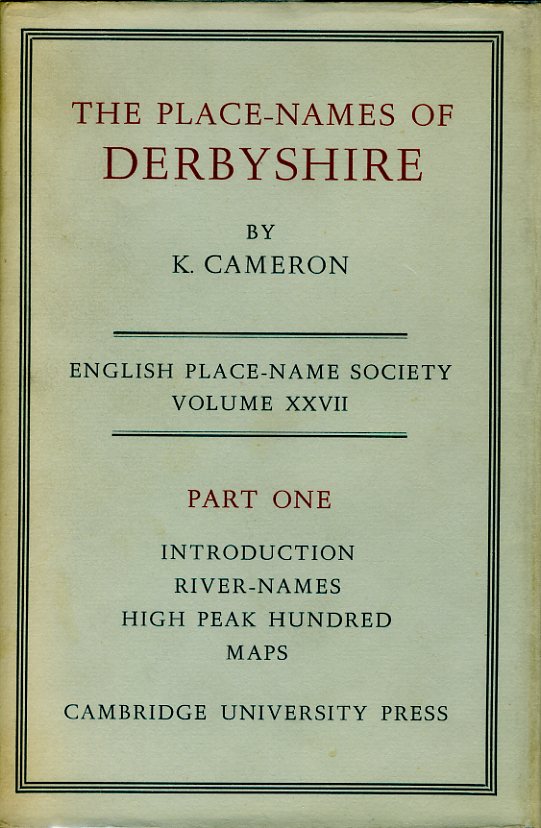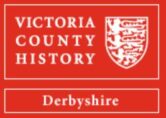Local historians are often asked what a particular place-name means and where it’s come from. In VCH we use the standard reference work on the subject, the multi-volumed English Place-Name Society (EPNS) volumes.
As the society’s website explains EPNS;
… was established in 1923 to conduct a county-by-county survey of the place-names of England. The first county survey of Buckinghamshire appeared in 1925.
To date, the Survey has produced 91 volumes, the most recent being The Place-Names of Leicestershire Part VII, published in 2016. Almost all English counties have been surveyed at least in part and work to complete the Survey is ongoing.
The Survey is used by researchers, academics, and those interested in the origins, meaning, and significance of English place-names.

Derbyshire has a complete survey, split across three parts. Part one includes a general introduction, survey of river names and covers the High Peak Hundred. Part two covers the Scarsdale, Wirksworth and Morleyston & Litchurch hundreds; part three the Appletree, Repton & Gresley hundreds with analysis and indexes. Despite being published in 1959, the volumes are still the ‘gold standard’ for place name study. There’s an entry for each place studied which consists of a list of names associated with it, followed by a description of the name’s meaning. Street names and field names are also identified – with some more notable ones being very briefly discussed.
So, as an example; for Chesterfield, (which is in part two) the survey identifies the name ‘Cestrafelda’ as being used in 955 and other variations thereafter, declaring the name means ‘open country near or belonging to a fortification’. At time the survey was published in 1959, existence of a fort in Chesterfield was still unproved, but we now know that indeed the town was a Roman fort.
You’ll need access to part one to identify what some of the abbreviations in the text for each place-name mean. Incidentally the ‘maps’ identified on the dust jacket of part one are actually in part three!
Some of the society’s publications (but not currently Derbyshire) are now available on-line https://www.nottingham.ac.uk/research/groups/epns/downloads.aspx. The Derbyshire volumes are now out-of-print, but you may be able to obtain second-hand copies. They are also available to consult in Derbyshire and Derby Libraries local studies.
Despite its age The Place-Names of Derbyshire is VCH’s first port-of-call when we look at place-name origins. It ought to be yours too, if you are interested in the subject of how your community came to have its name.
